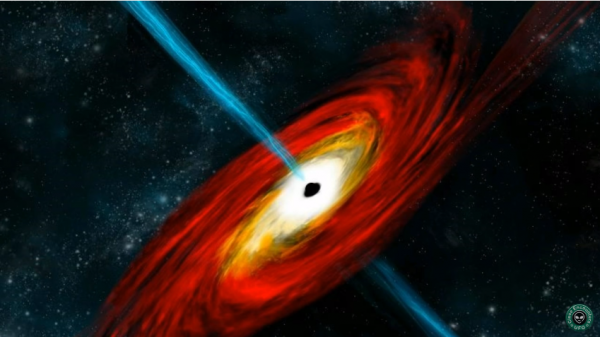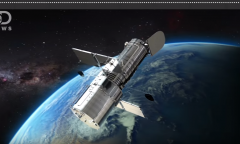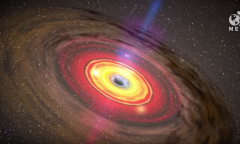By Prei Dy, | June 04, 2017

Researchers used a powerful X-ray laser to expose several molecules to a might beam of radiation, forming a structure similar to a black hole. (YouTube)
A team of physicists from California discovered that firing the most powerful X-ray laser to a small iodine molecule could not only destroy the molecule in the process but also fascinatingly cause a bizarre phenomenon akin to a black hole.
The study, which was published in the journal Nature, used the X-ray laser at the SLAC National Accelerator Laboratory to expose several molecules to a might beam of radiation. The X-ray laser, which uses a two-mile-long linear acceleratory to generate billions of times more power than older lasers, was directed to a single iodine atom that is bound to a molecule consisting of one carbon and three hydrogen atoms (methyl group).
Like Us on Facebook
As expected, the X-ray radiation stripped away the electrons from the atom. But surprisingly, the huge amount of energy hitting the iodine atom caused it to violently rip electrons away from its attached methyl group. According to Daniel Rolles, Kansas State University's co-author and assistant professor, this is something that has not been seen by experts before.
The X-ray "generated a lot of charge inside the atom, and it sucks in everything around it," Rolles said. "It doesn't seem to stop," behaving in a way like "a molecular black hole."
"When, say, a star is close to a black hole, the gravitational pull of the black hole causes a transfer of matter [away] from the star," Prof. Robin Santra from the University of Hamburg said. "It is not known that when this happens, not only is matter sucked into the black hole, but there is also the ejection of strong jets of matter away from the black hole."
Santra further explained the resemblance of the situation. The increased x-ray pulse intensity caused the iodine atom to lose several of its electrons, and the highly positively charged atom now acts like a black hole, sucking electrons in from other molecules.
According to Sputnik, it was the smallest possible scale for a black hole, involving a single molecule and occurring in a minute fraction of a time at 30 femtoseconds (or 1/33 trillionth of a second). Furthermore, instead of using a powerful gravitational pull, the force exerted an electrochemical one.
However, although the technique is powerful and useful, the only problem being that "when you do [it], you damage the structure you want to look at," Rolles said, adding that the study aims to quantify radiation damage on the microscopic level.
Meanwhile, researchers hope that their recent work will help better understand the X-ray laser's molecular effects, which are also used as a basis to study other structures like proteins and viruses.
-
Use of Coronavirus Pandemic Drones Raises Privacy Concerns: Drones Spread Fear, Local Officials Say

-
Coronavirus Hampers The Delivery Of Lockheed Martin F-35 Stealth Fighters For 2020

-
Instagram Speeds Up Plans to Add Account Memorialization Feature Due to COVID-19 Deaths

-
NASA: Perseverance Plans to Bring 'Mars Rock' to Earth in 2031

-
600 Dead And 3,000 In The Hospital as Iranians Believed Drinking High-Concentrations of Alcohol Can Cure The Coronavirus

-
600 Dead And 3,000 In The Hospital as Iranians Believed Drinking High-Concentrations of Alcohol Can Cure The Coronavirus

-
COVID-19: Doctors, Nurses Use Virtual Reality to Learn New Skills in Treating Coronavirus Patients











